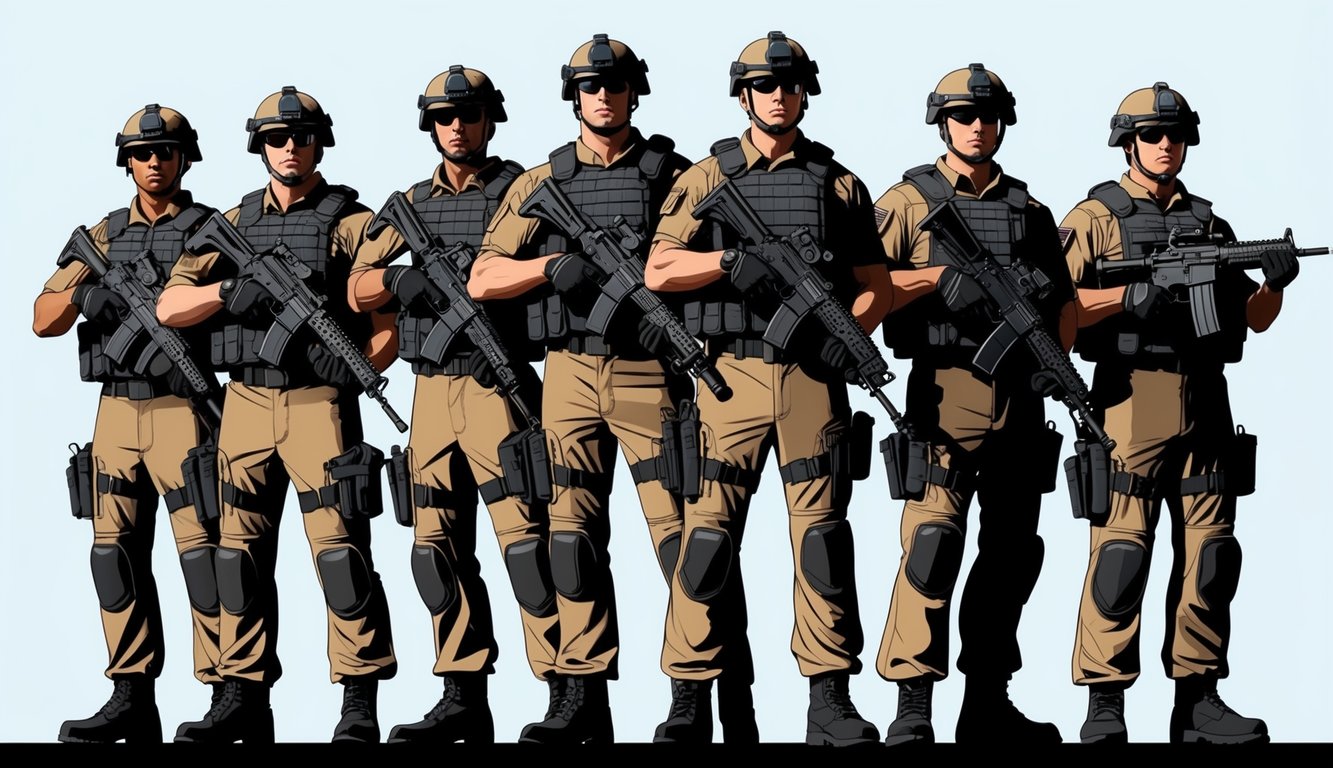Tier 1 operators represent the pinnacle of excellence in special operations forces.
These elite teams, also referred to as Special Missions Units (SMUs), function under the Joint Special Operations Command (JSOC) and are entrusted with the most vital and classified missions for the United States military.
You may recognize some of these units, such as SEAL Team Six or Delta Force, yet their activities are frequently enveloped in secrecy.
These exceptionally trained warriors go through thorough selection procedures and rigorous training to achieve their esteemed status.
Equipped with state-of-the-art technology, they are deployed for high-stakes missions, including counter-terrorism and hostage rescue.
Although their operations seldom make the news, their contributions to national security are invaluable.
### Key Takeaways
– Tier 1 operators are elite special forces responsible for the most critical assignments.
– These units undergo rigorous training and strict selection processes to uphold their elite status.
– Tier 1 units are essential for national security and often operate under a veil of secrecy.
## History of Tier 1 Units

The history of Tier 1 units is rich with narratives of covert operations and high-stakes missions, with origins that can be traced back to Cold War tensions and shaped through various global conflicts.
These elite forces have been pivotal in many significant [military operations](https://sucharmy.com/best-books-on-military-strategy-tactics-and-history/) over recent decades.
### Origins and Evolution
You may be surprised to discover that the inception of Tier 1 units dates back to the 1970s, driven by rising terrorism threats that necessitated specialized counter-terrorism forces.
Delta Force was established in 1977, and shortly after, in 1980, SEAL Team 6, currently known as DEVGRU, was formed.
These units quickly adapted to emerging threats and technological advancements.
Their training became increasingly challenging, and their equipment more sophisticated.
The Joint Special Operations Command (JSOC) was established in 1980 to supervise these elite groups.
As global conflicts evolved, Tier 1 units expanded their capabilities to encompass not just counter-terrorism but also hostage rescue, intelligence gathering, and direct-action missions.
### Notable Missions and Operations
You may be familiar with some prominent missions executed by Tier 1 units.
Operation Neptune Spear, which resulted in the death of Osama bin Laden in 2011, is arguably the most recognized.
DEVGRU operators executed this operation with remarkable precision.
Delta Force was crucial in capturing Saddam Hussein in 2003 as part of Task Force 121, a joint special operations task force.
In 2019, Delta Force’s raid led to the elimination of ISIS leader Abu Bakr al-Baghdadi, exemplifying the ongoing relevance of Tier 1 units in contemporary warfare.
These missions underscore the extraordinary skill and valor of Tier 1 operators, whose actions have shaped global events and continue to influence international security.
## Hierarchy and Structure

Tier 1 special operations units function within a complex organizational framework under stringent oversight.
These elite teams are strategically positioned to respond rapidly to high-priority missions worldwide.
### JSOC and Command Oversight
The Joint Special Operations Command (JSOC) is at the helm of the Tier 1 hierarchy, often regarded as the central command coordinating the most sensitive military operations.
They report directly to the Secretary of Defense and the President.
Beneath JSOC’s umbrella, various Tier 1 units operate, each with its own command structure, yet all ultimately report to JSOC leadership.
This organization ensures rapid decision-making and deployment in critical situations.
JSOC also promotes interagency collaboration, essential for these units to work efficiently with intelligence organizations like the CIA or FBI, particularly when addressing complex threats.
### Key Tier 1 Units
The Naval Special Warfare Development Group (DEVGRU), commonly known as SEAL Team Six, is one of the most recognized Tier 1 units.
Another significant player is the Army’s Delta Force, specializing in counterterrorism and hostage rescue operations.
The 24th Special Tactics Squadron provides crucial air support, encompassing everything from combat control to pararescue missions.
Additionally, the Intelligence Support Activity (ISA) serves as the eyes and ears of the Tier 1 community, collecting vital intelligence for mission preparations.
While not classified as Tier 1, Navy SEALs and Army Rangers often serve as a talent pool for these elite units, acting as a developmental pipeline for special operations.
## Recruitment and Training

Joining a Tier 1 special operations unit demands exceptional skill, unwavering determination, and immense fortitude.
The selection process is intensely challenging, followed by some of the most rigorous training in the military.
### Selection Process
To be considered for a Tier 1 unit, candidates must have a proven track record in other elite forces, such as the Army Rangers, Green Berets, or Navy SEALs.
The selection process is grueling and designed to test limits comprehensively, involving demanding physical assessments, intricate problem-solving scenarios, and stringent psychological evaluations.
Only a small percentage of candidates succeed.
Recruiters seek more than mere physical strength; they prioritize mental resilience, adaptability, and the capacity for clear thinking under high stress.
Background checks are thorough, with even minor issues potentially disqualifying candidates.
### Rigorous Training Regimens
Once selected, candidates undergo a training pipeline that challenges them beyond their limits.
They refine advanced combat skills, such as expert marksmanship, close-quarters battle, and explosives handling.
Specialized proficiency is also developed in areas like advanced driving techniques, skydiving, and scuba diving.
Language and cultural training equips operators for overseas deployments, while medical training ensures readiness to manage injuries in the field.
Equally important is the mental and psychological preparation, covering resistance to interrogation techniques, survival skills, and covert operations for extended durations.
The goal is to mold operators capable of navigating any situation globally.
## Roles and Responsibilities

Tier 1 operators engage in the most demanding and high-stakes missions, leading the charge in counter-terrorism, intelligence operations, and specialized combat activities.
### Direct Action and Counter-Terrorism
As a Tier 1 operator, you are at the forefront of counter-terrorism efforts.
Your missions often entail high-stakes hostage rescues and precision strikes against enemy targets, necessitating mastery in close-quarters combat and marksmanship.
Your unit may be tasked with raiding terrorist strongholds or dismantling organized crime networks, requiring quick decision-making and flawless execution.
Utilizing advanced weapons and equipment, you remain one step ahead of potential threats.
Hostage rescue skills are vital, and extensive training in breaching methods, room clearing tactics, and negotiation strategies is necessary.
The objective is to save lives while neutralizing threats, ensuring minimal collateral damage.
### Special Reconnaissance and Intelligence
Your responsibilities extend beyond direct combat.
As a Tier 1 operator, you also specialize in gathering critical intelligence.
Conducting covert surveillance missions often occurs within hostile territories and behind enemy lines.
Your reconnaissance abilities are crucial for mission planning.
This may involve tracking high-value targets, mapping out enemy positions, or evaluating possible threats.
Such intelligence is integral to high-level strategic decisions.
Technology plays a significant role in your operations.
Employing advanced surveillance gear, satellite imagery, and communication systems is essential.
Quick data analysis can profoundly influence operational success.
### Operational Support and Enablers
Although combat abilities are essential, Tier 1 operators are part of a multifaceted network of specialists who facilitate mission success.
You may specialize in logistics, ensuring your team is equipped with the appropriate gear and supplies for any situation.
Alternatively, you might focus on communications, maintaining secure lines amid challenging environments.
Fire support coordination is another key function.
You would facilitate air strikes, artillery support, or sniper assistance to enhance team effectiveness, utilizing tactical expertise and battlefield awareness to contribute to planning and executing intricate operations.
## Strategic Impact
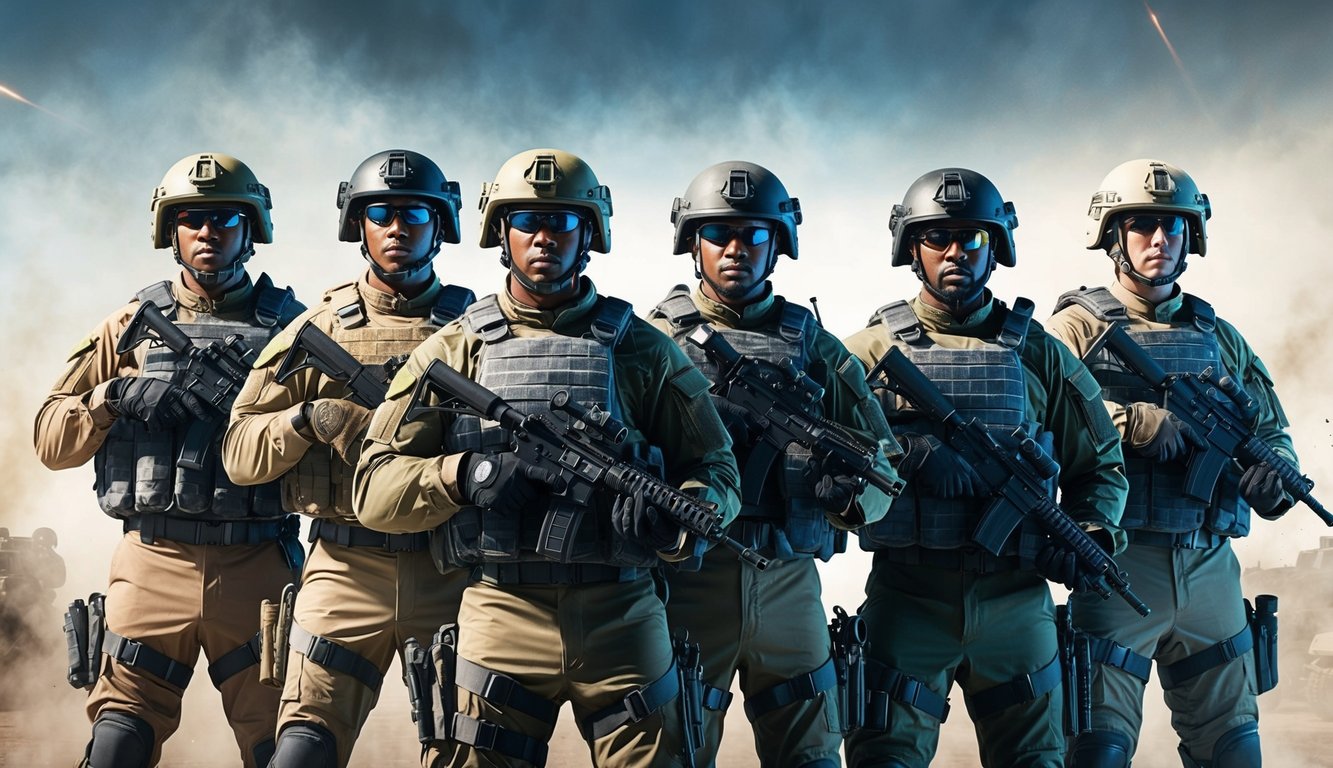
Tier 1 operators wield significant influence over global security and international military cooperation.
Their specialized skills and covert operations are instrumental in addressing complex threats.
### National Security Contributions
You might be amazed to learn how much Tier 1 operators bolster national security.
These elite forces frequently function behind the scenes, tackling high-stakes missions that influence public safety directly.
They are responsible for neutralizing terrorist leaders, disrupting ISIS operations, and collecting crucial intelligence—actions that can avert large-scale attacks and safeguard civilian lives.
Task Force 121 has been vital in capturing high-value targets, leading to critical disruptions in terrorist networks and enhancing overall national security.
### International Collaborations
Tier 1 operators don’t limit their efforts to national borders.
They regularly collaborate with elite units from other countries, exchanging expertise and tactics.
You may witness them training alongside the Australian Special Air Service Regiment or conducting joint operations with allied forces.
Such partnerships fortify global counterterrorism initiatives, improving interoperability among nations.
These collaborations enable rapid responses to international crises.
In situations involving hostages or emerging terrorist threats abroad, Tier 1 units can quickly mobilize with their foreign counterparts.
Such alliances also nurture diplomatic relations, as Special Operations Forces often serve as informal ambassadors during their overseas missions.
## Equipment and Technology
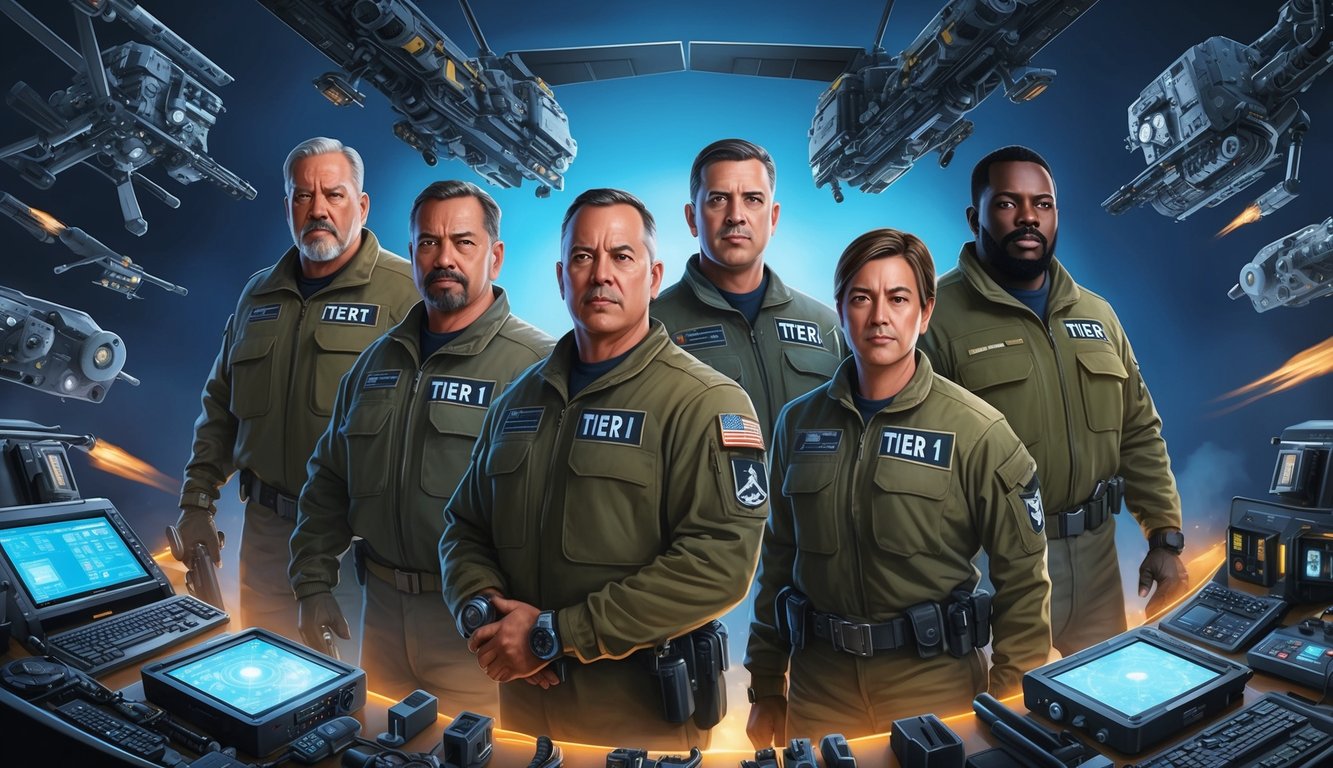
Tier 1 operators utilize cutting-edge equipment and advanced technologies to carry out high-stakes missions.
The gear for these elite operators is meticulously designed to ensure optimal performance in extreme conditions.
### Specialized Gear and Armaments
As a Tier 1 operator, you would have access to state-of-the-art weaponry and equipment.
Your main rifle might be a customized M4 carbine fitted with advanced optics and suppressors.
For close-proximity engagements, you would likely carry a Glock 19 or SIG Sauer P320.
Your body armor would balance lightweight construction and robust protection, allowing for agility.
For low-light operations, night vision goggles and thermal imaging devices would be standard.
Specialized breaching tools, such as explosive charges or hydraulic door breachers, would enable entry during high-value raids.
### Advancements in Military Technology
The technological capabilities available to you would be remarkable.
Miniature drones could assist in real-time reconnaissance of target areas.
Advanced communication systems would keep you connected to your team and command hub.
GPS-guided precision munitions would allow for accurate strikes on enemy positions.
In terms of air support, you could enlist the 160th SOAR (Special Operations Aviation Regiment) to deploy stealth helicopters equipped with the latest sensors and weapon systems.
Your gear would take advantage of leading-edge materials science, featuring uniforms with [enhanced flame resistance](https://sucharmy.com/best-military-uniforms-and-camouflage-clothing/) and camouflage that adapts to various environments.
## Cultural and Media Influence
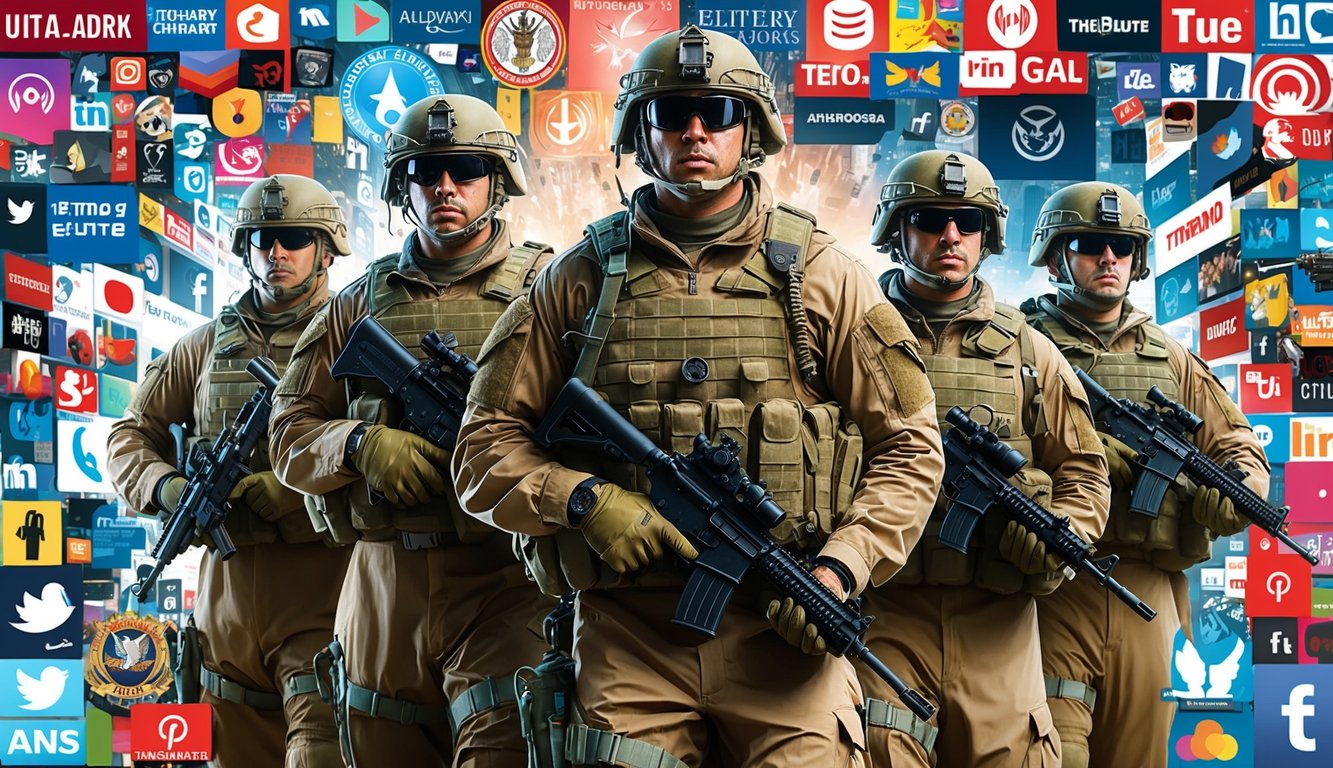
Tier 1 operators have captivated public interest, frequently appearing in popular culture and media.
Their secretive nature and elite status create a blend of fascination and misunderstanding among civilians.
### Recognition in Popular Culture
You’ve likely seen Tier 1 operators portrayed in movies, television shows, and video games.
SEAL Team Six and Delta Force often appear as heroic figures in action-packed thrillers, while video game series like “Call of Duty” allow players to walk in the shoes of these elite warriors.
Various books and documentaries provide insights into their [training and missions](https://sucharmy.com/best-guides-to-military-fitness-programs/).
These representations can be a mix of accuracy and exaggeration; although they emphasize the operators’ skills and valor, they may oversimplify the complex realities of their work.
Some former operators have even collaborated on media projects to enhance authenticity.
### Public Perception and Secrecy
You might find it challenging to discern fact from fiction regarding Tier 1 operators.
The secrecy enveloping units like DEVGRU and Delta Force fuels speculation and myths.
Official information remains scant, and operators adhere to stringent non-disclosure agreements.
This veil of secrecy serves dual purposes: it protects operational security and the identities of personnel while simultaneously amplifying the mystique surrounding these units, enhancing their deterrent effect against potential adversaries.
Public perception tends to be favorable, viewing Tier 1 operators as elite guardians.
However, critics argue that the focus on special operations may overshadow the vital contributions made by conventional forces.
## Challenges and Controversies
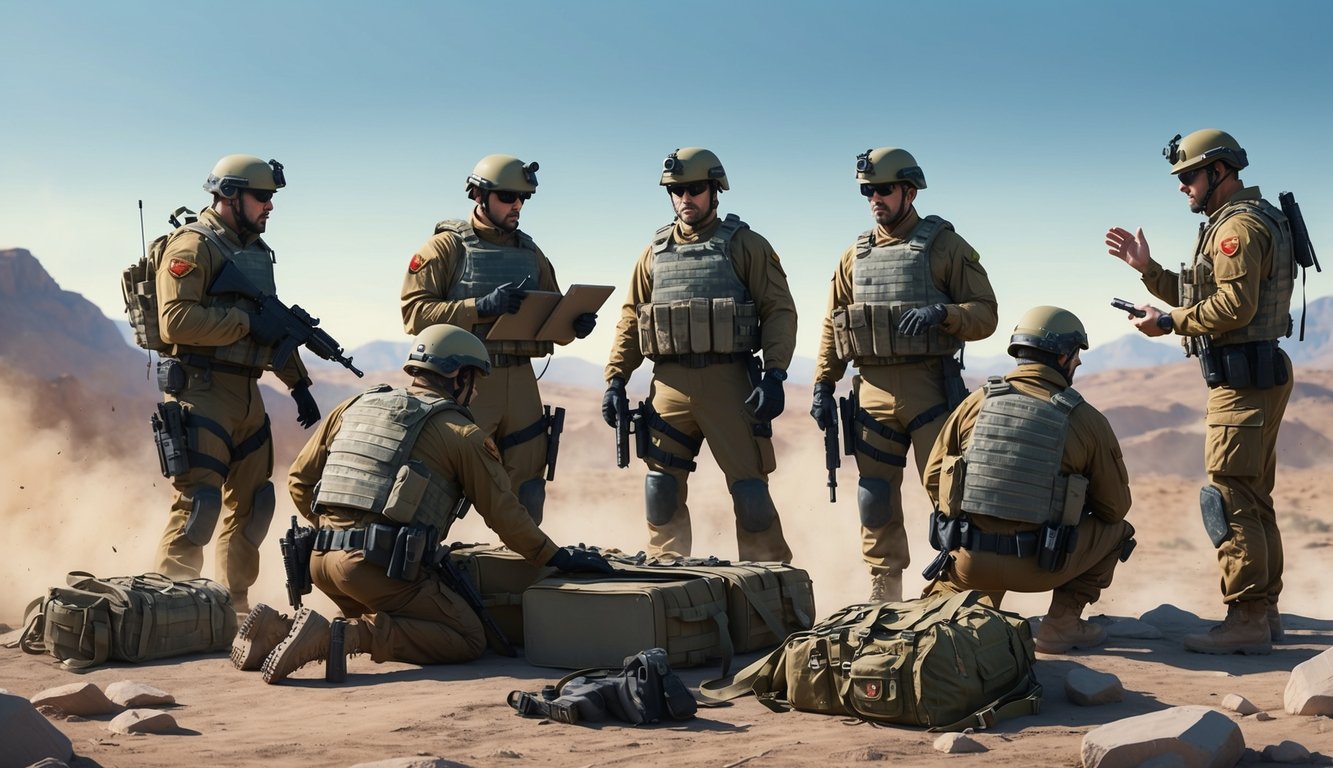
Tier 1 operators encounter significant ethical dilemmas and operational risks while executing their [high-stakes missions](https://sucharmy.com/best-tactical-vests-and-plate-carriers/).
These elite units grapple with complex moral questions amid the ever-present threat of casualties.
### Ethical Considerations
You may question the ethical implications arising from Tier 1 operations.
Conducting raids and targeted killings often raises concerns about due process and the potential for civilian casualties.
The case of Kayla Mueller, an American aid worker killed in captivity, underscores the moral complexities surrounding rescue operations.
Tier 1 operators must balance the necessity for swift action with minimizing collateral damage, facing difficult choices between mission objectives and civilian safety.
The use of lethal force in non-war zones presents additional legal and ethical challenges.
### Operational Risks and Casualties
As a Tier 1 operator, you would face extreme dangers in every mission.
High-risk raids can result in [operator casualties](https://sucharmy.com/best-tactical-load-bearing-equipment/), even with thorough training and advanced gear.
Your team may encounter unexpected resistance or intelligence failures, byproducts of the high-stakes nature of the work.
The psychological toll stemming from repeated high-pressure operations cannot be disregarded.
You would handle the weight of life-or-death decisions and potential post-traumatic stress.
The secretive aspect of these units means casualties often go unrecognized publicly, leading to emotional burdens for families.
## Frequently Asked Questions
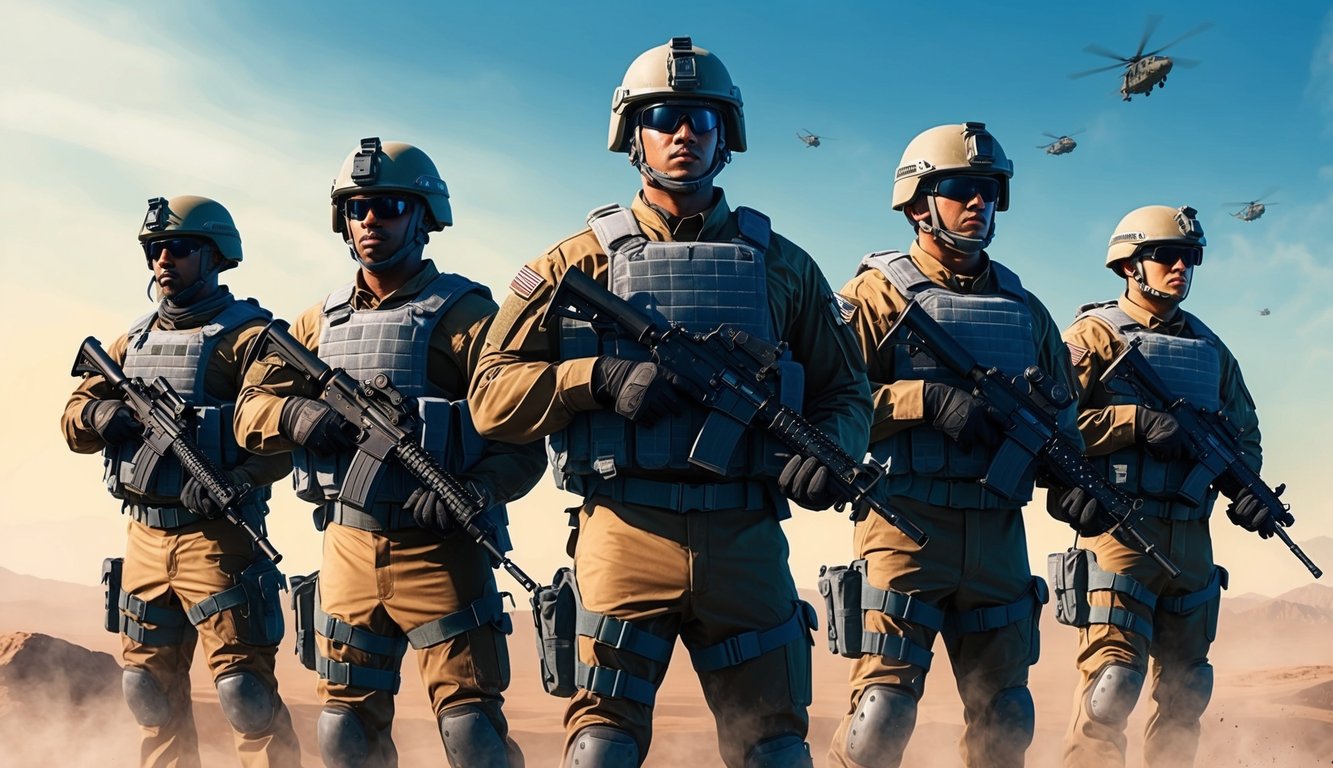
There is considerable curiosity surrounding Tier 1 Special Forces operators, given their specialized capabilities and crucial roles.
### What groups fall under the Tier 1 Special Forces classification?
Tier 1 Special Forces encompass units such as Delta Force, SEAL Team Six, and the 24th Special Tactics Squadron.
These teams are responsible for the most sensitive, high-risk operations for the U.S. military.
### How does the pay scale differ between Tier 1 and Tier 2 Special Forces operators?
Typically, Tier 1 operators earn higher salaries than their Tier 2 counterparts, with additional special duty pay and bonuses reflecting their advanced skills and increased operational tempo.
### In comparison, what distinguishes Tier 1 from Tier 2 Special Forces?
Tier 1 units focus on more specialized, covert missions and often have access to advanced equipment and extensive training.
Tier 2 units, while still elite, manage a broader range of operations.
### Which units are considered Tier 1 within the US military’s Special Forces?
The primary Tier 1 units within the U.S. military include:
1.
Delta Force (1st Special Forces Operational Detachment-Delta)
2.
Naval Special Warfare Development Group (SEAL Team Six)
3. 24th Special Tactics Squadron
4.
Intelligence Support Activity (ISA)
### What qualifications are needed to become a Tier 1 operator?
To become a Tier 1 operator, exceptional [physical fitness](https://sucharmy.com/best-military-fitness-and-training-equipment-pull-up-bars-sandbags-weighted-vests/) and combat skills are essential.
Candidates must also possess extensive experience in other special operations units and successfully pass rigorous selection processes.
### Which Tier do the Navy SEALs and Army Rangers fall into?
Most Navy SEAL teams and Army Ranger battalions are classified as Tier 2 units.
They are highly skilled and respected, but they do not quite reach Tier 1 status.
SEAL Team Six is an exception, being classified as a Tier 1 unit.

